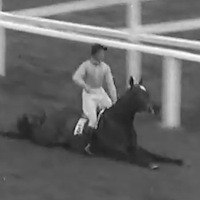The Last Days of Edgar Allan Poe

Despite the success of stories such as The Masque of the Red Death, The Narrative of A. Gordon Pym, Fall of the House of Usher, and The Murders in the Rue Morgue, Edgar Allan Poe died in destitution and relative unknown-ness. His stories, in fact, did not become hugely popular or successful until after his death in Baltimore on October 7, 1849.
Much of Poe’s life has been detailed by many authors. In fact, for my degree, I had to perform 100 hours of research on a topic for my recital. My topic was Edgar Allan Poe. I’ll try to keep this article as brief as possible. My recital was an hour long with a 20-minute presentation on his life. I’m sure the manuscript from the speech would bore you to tears. So! Let’s discuss what brought Poe to his untimely and unfortunate demise.
By 1849, Poe had some major falling-outs in his life. Virginia, his wife of 11 years, died a horrible death from tuberculosis in 1847. Despite having courted other women, his dearest friend from childhood (to whom he had proposed), Sarah Elmira Royster, believed that Poe never loved anyone else as much as he did his deceased wife. On September 27, 1849, Poe left Richmond, Virginia, for New York to see Miss Royster.
He never arrived.
For one week, no one saw Edgar Allan Poe. At all. At least, no one came forward to say they had seen him. After September 27 and until October 3, there is no record of his life. On October 3, however, a note from Joseph W. Walker to Dr. Joseph E. Snodgrass, stating:
When Poe was found, he was wearing rather shabby attire. His normal attire consisted of pressed white shirts, black wool jackets and matching pants, and a felt top hat—the style of the time. Despite his destitution, Poe kept himself well dressed and respectable. His attire on October 3 was a dirty shirt, ill-fitting suit, unpolished shoes and unkempt hair. Snodgrass noted that it was uncharacteristic of his patient and friend.
Poe was then sent to the clinic in Baltimore where Dr. John Joseph Moran cared for him. Poe was kept in a prison-like room and denied visitors—treated the way a drunkard was treated at the time. Snodgrass, however, stated that there were clearly no signs of intoxication—no odor, no slurring, nothing of the sort. While at the clinic, Poe would call out a singular name: “Reynolds.” No one really knows to whom he was referring. Theories abound as to whom the mysterious name belonged to, but nothing was ever proven. He also referred to his “wife in Richmond.” Many believe he was delirious and hallucinating that his beloved Virginia was still alive. Others believe he was referring to Royster, to whom he’d just become engaged. Again, no one knows for certain.
The cause of death is also disputed. Everything from rabies to alcoholism to hypoglycemia to cooping and a murder conspiracy have emerged since his death. Cooping has been the most commonly accepted theory, though Poe was relatively well-known in Baltimore at that time and the scam may not have worked. Cooping was the practice of shanghai-ing a person, drugging them, and “cooping” them up in a room to use as pawn for a political election. The fact that Poe did, in fact, have a brain lesion lends credibility to the theory, as any type of trauma to his head would have caused him to seem intoxicated—so, delirious, hallucinating, etc.
Recently, credible evidence has surfaced that Poe may have died from rabies. However, that theory does not explain the lack of Poe’s normal clothing. We’ll probably never know the true cause of his death on October 7, 1849.
Two rather chilling thoughts from his life, however, are as follows. First, in his poem Annabel Lee, the narrator speaks the lines:
Virginia Poe was buried in Fondham, originally. But, when the cemetery was destroyed, her bones were nearly forgotten. They were taken by biographer William Gill, and stored in a box under his bed until he was able to contact Poe’s family. Poe had himself passed by this time. On what would have been the poet’s 76th birthday, Virginia’s remains were reentered next to her husband’s in Baltimore—near “the sounding sea.”
Second, one of Poe’s most popular poems, The Raven, was published in January 1845. It possessed a unique structure and rhythm that had not been used frequently—if ever—before Poe’s composition. After Poe’s death, a spiritualist medium published a poem that she said was dictated to her by Poe’s spirit. At the time of the publication, no one knew who wrote the poem, but it was very eerie to read about the death of the author—approximately 30 years after his death. Later, the medium came forward and announced that The Streets of Baltimore, as well as other poems, were written by her, Elizabeth Doten, as dictated by the spirit of EA Poe.
For more information on Poe, please visit:
EA Poe Society of Baltimore
The Poe Museum
Wikipedia on his death (actually a very well done wiki and quite well documented)
Much of Poe’s life has been detailed by many authors. In fact, for my degree, I had to perform 100 hours of research on a topic for my recital. My topic was Edgar Allan Poe. I’ll try to keep this article as brief as possible. My recital was an hour long with a 20-minute presentation on his life. I’m sure the manuscript from the speech would bore you to tears. So! Let’s discuss what brought Poe to his untimely and unfortunate demise.
By 1849, Poe had some major falling-outs in his life. Virginia, his wife of 11 years, died a horrible death from tuberculosis in 1847. Despite having courted other women, his dearest friend from childhood (to whom he had proposed), Sarah Elmira Royster, believed that Poe never loved anyone else as much as he did his deceased wife. On September 27, 1849, Poe left Richmond, Virginia, for New York to see Miss Royster.
He never arrived.
For one week, no one saw Edgar Allan Poe. At all. At least, no one came forward to say they had seen him. After September 27 and until October 3, there is no record of his life. On October 3, however, a note from Joseph W. Walker to Dr. Joseph E. Snodgrass, stating:
Dear Sir—There is a gentleman, rather the worse for wear, at Ryan’s 4th ward polls, who goes under the cognomen of Edgar A. Poe, and who appears in great distress, & he says he is acquainted with you, and I assure you, he is in need of immediate assistance. Yours, in haste, Jos. W. Walker.
When Poe was found, he was wearing rather shabby attire. His normal attire consisted of pressed white shirts, black wool jackets and matching pants, and a felt top hat—the style of the time. Despite his destitution, Poe kept himself well dressed and respectable. His attire on October 3 was a dirty shirt, ill-fitting suit, unpolished shoes and unkempt hair. Snodgrass noted that it was uncharacteristic of his patient and friend.
Poe was then sent to the clinic in Baltimore where Dr. John Joseph Moran cared for him. Poe was kept in a prison-like room and denied visitors—treated the way a drunkard was treated at the time. Snodgrass, however, stated that there were clearly no signs of intoxication—no odor, no slurring, nothing of the sort. While at the clinic, Poe would call out a singular name: “Reynolds.” No one really knows to whom he was referring. Theories abound as to whom the mysterious name belonged to, but nothing was ever proven. He also referred to his “wife in Richmond.” Many believe he was delirious and hallucinating that his beloved Virginia was still alive. Others believe he was referring to Royster, to whom he’d just become engaged. Again, no one knows for certain.
The cause of death is also disputed. Everything from rabies to alcoholism to hypoglycemia to cooping and a murder conspiracy have emerged since his death. Cooping has been the most commonly accepted theory, though Poe was relatively well-known in Baltimore at that time and the scam may not have worked. Cooping was the practice of shanghai-ing a person, drugging them, and “cooping” them up in a room to use as pawn for a political election. The fact that Poe did, in fact, have a brain lesion lends credibility to the theory, as any type of trauma to his head would have caused him to seem intoxicated—so, delirious, hallucinating, etc.
Recently, credible evidence has surfaced that Poe may have died from rabies. However, that theory does not explain the lack of Poe’s normal clothing. We’ll probably never know the true cause of his death on October 7, 1849.
Two rather chilling thoughts from his life, however, are as follows. First, in his poem Annabel Lee, the narrator speaks the lines:
“And so all the nighttide,
I lie down by the side
Of my darling, my darling
My wife and my bride
In her sepulcher there by the sea
In her tomb by the sounding sea.”
Virginia Poe was buried in Fondham, originally. But, when the cemetery was destroyed, her bones were nearly forgotten. They were taken by biographer William Gill, and stored in a box under his bed until he was able to contact Poe’s family. Poe had himself passed by this time. On what would have been the poet’s 76th birthday, Virginia’s remains were reentered next to her husband’s in Baltimore—near “the sounding sea.”
Second, one of Poe’s most popular poems, The Raven, was published in January 1845. It possessed a unique structure and rhythm that had not been used frequently—if ever—before Poe’s composition. After Poe’s death, a spiritualist medium published a poem that she said was dictated to her by Poe’s spirit. At the time of the publication, no one knew who wrote the poem, but it was very eerie to read about the death of the author—approximately 30 years after his death. Later, the medium came forward and announced that The Streets of Baltimore, as well as other poems, were written by her, Elizabeth Doten, as dictated by the spirit of EA Poe.
For more information on Poe, please visit:
EA Poe Society of Baltimore
The Poe Museum
Wikipedia on his death (actually a very well done wiki and quite well documented)
You Should Also Read:
Literary Short Stories - Edgar Allan Poe
History of Classic Crime
The Disappearance of Orion Williamson

Related Articles
Editor's Picks Articles
Top Ten Articles
Previous Features
Site Map
Content copyright © 2023 by Christa Mackey. All rights reserved.
This content was written by Christa Mackey. If you wish to use this content in any manner, you need written permission. Contact Lane Graciano for details.







